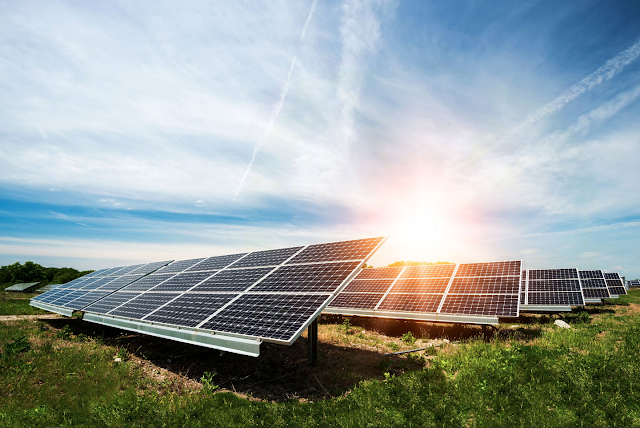Solar Energy Providers: Harnessing the Power of the Sun
1.1 The Growing Popularity of Solar Power
Solar power is experiencing a surge in popularity worldwide. As concerns about climate change and environmental sustainability grow, individuals and organizations are turning to solar energy as a clean and renewable alternative to fossil fuels.
1.2 Environmental Benefits of Solar Energy
Harnessing the sun's energy reduces greenhouse gas emissions, air pollution, and dependence on finite fossil fuels. Solar power contributes significantly to a cleaner and greener planet.
Understanding Solar Energy Providers
2.1 What Do Solar Energy Providers Do?
Solar energy providers specialize in the installation, maintenance, and sometimes financing of solar energy systems. They make it feasible for consumers to adopt solar power.
2.2 Types of Solar Energy Services
Solar providers offer a range of services, including residential solar installations, commercial solar solutions, solar power purchase agreements (PPAs), and community solar projects.
Solar Energy Technology
3.1 Photovoltaic (PV) Systems
PV systems, commonly found on rooftops, convert sunlight into electricity through solar panels. These systems are versatile and can be installed on various surfaces.
3.2 Concentrated Solar Power (CSP)
CSP systems use mirrors or lenses to concentrate sunlight onto a small area, generating high-temperature heat used to produce electricity.
3.3 Solar Panels and Solar Cells
Solar panels contain solar cells that capture sunlight and convert it into electricity. Advances in solar cell technology continue to increase efficiency.
The Solar Installation Process
4.1 Site Assessment and Design
Solar providers assess your property's suitability for solar installation, considering factors like sun exposure and shading. They then design a system tailored to your needs.
4.2 Installation and Connection
Installation involves mounting solar panels and connecting them to your electrical system. Once installed, your home or business can start generating solar power.
4.3 Monitoring and Maintenance
Solar providers often offer monitoring services to ensure your system performs optimally. Regular maintenance helps extend the lifespan of your solar installation.
Benefits of Going Solar
5.1 Cost Savings
Solar power can lead to substantial cost savings on electricity bills, and incentives such as net metering allow you to earn credits for excess energy produced.
5.2 Energy Independence
Solar energy provides greater energy independence, reducing reliance on external energy sources and grid vulnerabilities.
5.3 Reduced Carbon Footprint
Switching to solar power significantly reduces your carbon footprint, helping combat climate change.
Choosing the Right Solar Energy Provider
6.1 Researching Local Providers
Research local solar energy providers, read reviews, and request quotes to find a reputable company that aligns with your goals.
6.2 Evaluating Quotes and Proposals
Compare quotes and proposals from multiple providers, considering factors like pricing, system efficiency, and warranties.
6.3 Assessing Warranties and Guarantees
Ensure your chosen provider offers robust warranties and guarantees to protect your investment.
Government Incentives and Rebates
7.1 Federal Solar Tax Credits
Federal tax credits can significantly reduce the cost of solar installation for homeowners and businesses.
7.2 State and Local Incentives
Many states and local governments offer additional incentives, such as rebates and performance-based incentives, to encourage solar adoption.
Solar Energy for Businesses
8.1 Commercial Solar Solutions
Businesses can benefit from solar energy by reducing operational costs and demonstrating a commitment to sustainability.
8.2 Solar Power Purchase Agreements (PPAs)
PPAs allow businesses to purchase solar power without the upfront cost of equipment installation.
The Future of Solar Energy
9.1 Advancements in Solar Technology
Ongoing research and development are leading to more efficient and affordable solar technologies.
9.2 Solar Energy in a Sustainable World
Solar energy is a key player in the transition to a sustainable and renewable energy future.
Conclusion
Solar energy providers are paving the way for a brighter and cleaner future. By understanding the solar energy landscape, you can make an informed choice when selecting a solar energy provider that aligns with your values and energy needs.
FAQs
How do I know if my property is suitable for solar installation?
A site assessment by a solar provider will determine your property's suitability.
Are there government incentives for going solar?
Yes, federal and state incentives can significantly reduce the cost of solar installation.
What is net metering, and how does it benefit solar users?
Net metering allows solar users to earn credits for excess energy they generate and feed back into the grid.
Can businesses benefit from solar power?
Absolutely, businesses can reduce operational costs and demonstrate sustainability through solar adoption.
What is the lifespan of a typical solar installation?
Solar installations often come with warranties of 20-25 years, but they can last longer with proper maintenance.


Comments
Post a Comment